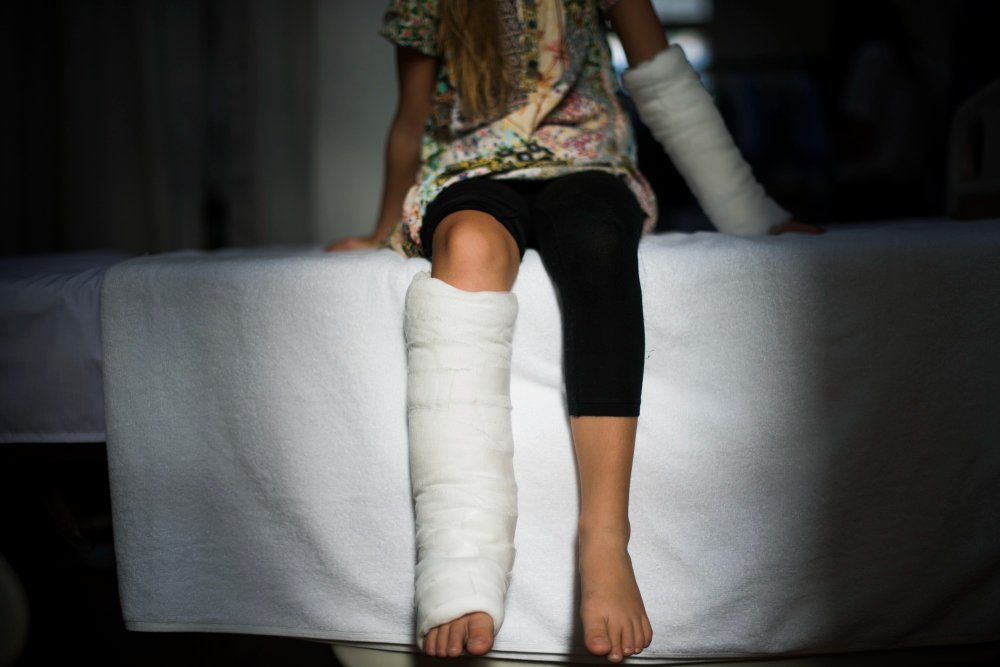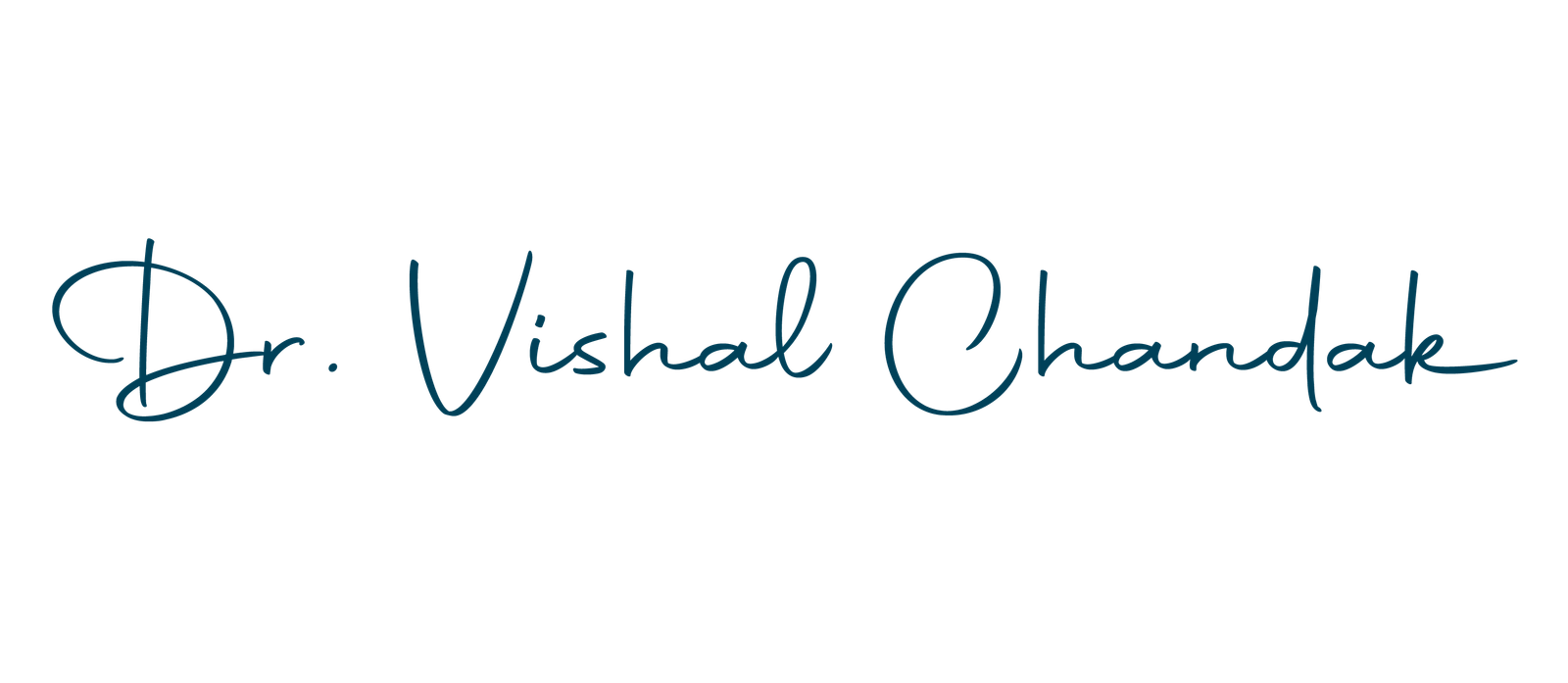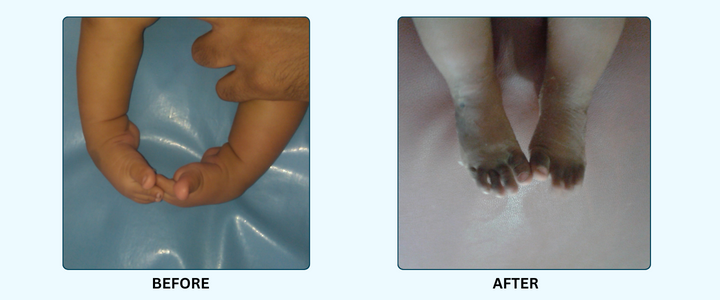1
2
What is a Clubfoot?
Clubfoot, medically known as congenital talipes equinovarus, is a birth defect where a baby’s foot is twisted out of shape or position. It typically appears with the foot turned inward and downward, resembling the club of a golf club. It can affect one or both feet. Clubfoot is a treatable condition, usually through a series of nonsurgical methods such as stretching, casting, and bracing, or in severe cases, through surgery. Early intervention is crucial to achieve the best outcomes and prevent long-term complications.
What is Clubfoot (CTEV) Management?
Effectively addressing congenital talipes equinovarus (CTEV), or clubfoot, involves a strategic approach. Discover how we optimize outcomes through the amalgamation of the Ponseti method, serial plaster casting, and Achilles tenotomy surgery.
Book an Appointment
Book an appointment with Dr. Vishal Chandak for expert Orthopedic Treatments & Consultations

Characterized by abnormal foot and ankle positioning

Ponseti method as the foundation for non-operative management

Additional interventions: serial plaster casting and Achilles tenotomy for optimal outcomes
3
What are the Various Solutions?
Serial Plaster Casting:
- Foundation of non-operative CTEV management.
- Gentle manipulation and gradual correction.
- Initiated soon after birth with weekly casts.
- Careful application for correction and continued growth.
Tenotomy Surgery:
- Minimally invasive release of tight Achilles tendon.
- Quick, low-risk procedure under local anesthesia.
- Final plaster cast post-surgery for healing and maintenance.
Rationale for Combined Approach:
- Serial casting adequacy in many cases, especially with early initiation.
- Persistent equinus deformity may require tenotomy for full correction.
- Comprehensive correction addressing both bony and soft tissue components.
How Dr. Vishal Chandak Stands Apart?
Dr. Vishal Chandak sets himself apart in orthopedic trauma care with:
Vast experience in treating pediatric fractures and musculoskeletal injuries.
Expertise in growth plate considerations and age-specific treatment approaches.
Comprehensive approach focusing on long-term functional outcomes and minimizing complications.
Personalized care and compassionate support for patients and their families.
Dr. Vishal Chandak stays updated with the latest orthopedics, ensuring cutting-edge treatments for patients.
Dr. Vishal Chandak works closely with specialists to provide comprehensive care, promoting holistic treatment approaches.
4
Our Facility
5
Our Process
Essential care for optimal healing post-tenotomy
Scheduled follow-ups to monitor progress, recurrence, or complications
Long-term monitoring for late relapses and residual deformity
DID YOU KNOW?
With early intervention and proper treatment, approximately 95% of clubfoot cases can be corrected successfully, allowing children to lead active and pain-free lives.
6
Our Support Team
Consultant Paediatrician

Dr. Atish Laddha
Paediatric Haemato-Oncologist

Dr. Shraddha Chandak
Paediatric Orthopedic surgeon

Dr. Viranchi Vaidya
Consultant Paediatric Nephrologist

Dr. Pankaj Bhansali
Paediatric Neurologists
Rehab Specialists

Dr. Varsha Vaidya

Dr. Madhavi Shelake
Rehab Specialists

Dr. Sandip Saraf

Dr. Pooja Patel

Dr. Monali Nawal
Paediatric Anaesthesiologist

Dr. Shivraj Chilwant

Dr. Prasad Deshpande

Dr. Renuka Marawar
7
Frequently Asked Questions
What is clubfoot (CTEV)?
Clubfoot is a birth defect where the foot is twisted inwards and downwards.
What are the treatment options for clubfoot?
Treatment typically involves a combination of gentle stretching exercises, splinting, and sometimes surgery. Dr. Chandak will recommend the most appropriate approach for your child.
What are the long-term outcomes for children treated for clubfoot?
With early intervention and proper treatment, most children with clubfoot can live active lives with minimal limitations.
How can I tell if my newborn baby has clubfoot?
Clubfoot is usually apparent at birth. If you have concerns about your baby’s feet, consult a pediatrician immediately.
What are the benefits of seeking treatment for clubfoot early?
Early intervention leads to better long-term outcomes and reduces the need for extensive treatment later in life.
Are there any long-term complications if clubfoot is left untreated?
Untreated clubfoot can lead to pain, difficulty walking, and limited mobility.
How often will my child need follow-up appointments for clubfoot management?
Follow-up appointments are crucial to monitor progress and adjust treatment as needed. Dr. Chandak will determine the frequency based on your child’s case.
Will my child need special footwear after treatment for clubfoot?
In some cases, specific shoes or braces may be recommended to maintain proper foot alignment.

